
Ukraine war: Last grain ship leaves Odesa as deal deadline looms
Russia has threatened not to extend the deal allowing Ukraine's Black Sea grain exports despite the war.
2023-07-17 00:51

Brother of Ronan Keating dies in Mayo crash
Ciaran Keating, the older brother of singer Ronan, has died in a car crash in County Mayo.
2023-07-17 00:27
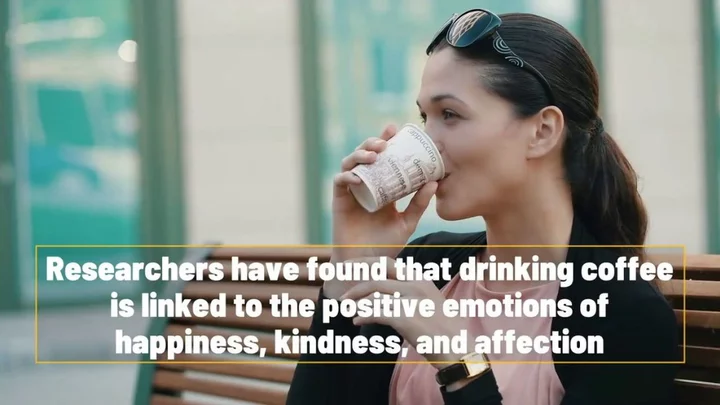
Scientists say drinking coffee gives ‘special boost’ to the brain
If you’re anything like us, the first coffee of the day is the only thing that can get us up on a morning – and it turns out, there’s real science behind it. Everyone knows that coffee can give us a welcome caffeine hit, but it’s now been revealed that the drink also gives us an extra ‘special boost’ too. Scientists have claimed that the act of drinking a cup of joe gives the body a lift, making us more alert, which can’t be replicated merely with caffeine. In fact, new research shows that drinking hot coffee activates additional areas of the brain. Sign up to our free Indy100 weekly newsletter Scientists from the University of Minho in Portugal and elsewhere looked into the effects of coffee outside of just caffeine content as part of a study – and they found that plain caffeine didn’t have the same impact. In fact, a cup of coffee also influenced working memory and goal-directed behaviour. “There is a common expectation that coffee increases alertness and psychomotor functioning. When you get to understand better the mechanisms underlying a biological phenomenon, you open pathways for exploring the factors that may modulate it and even the potential benefits of that mechanism,” study co-author Nuno Sousa explained. Experts said that drinking coffee actually increased the connectivity in the brain’s more advanced nerve network controlling vision, and other parts involved in working memory, cognitive control and goal-directed behaviour – something not found when participants only took caffeine. Researchers also said that if subjects wanted to not just feel alert but ready to go, caffeine alone might not do the job. “Acute coffee consumption decreased the functional connectivity between brain regions of the default mode network, a network that is associated with self-referential processes when participants are at rest,” study co-author Maria Picó-Pérez said. “The subjects were more ready for action and alert to external stimuli after having coffee,” she added. Have your say in our news democracy. Click the upvote icon at the top of the page to help raise this article through the indy100 rankings.
2023-07-16 23:55

Why Biden worries about a third-party rival in 2024
2024 is shaping up to be the kind of election Joe Biden could lose primarily because of a third-party candidacy.
2023-07-16 20:19
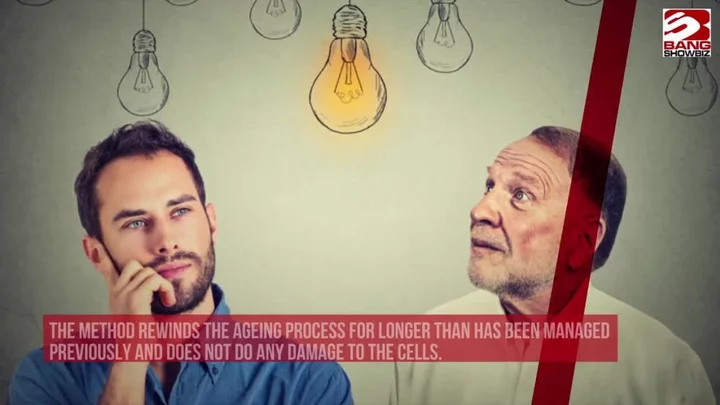
The reason why people really did look older in the past
Back in the day, it’s said that people looked a lot older earlier in life than they do now. As it turns out, there’s a few reasons why. A video essay exploring the phenomenon from Vsauce posits a few explanations why we notice people looking older at a younger age in old footage and photographs. For one, the improvements in standards of living and advancements in healthcare over the years offer an obvious factor. There’s also subconscious bias surrounding fashions from years gone by and their connection with older generations. Sign up to our free Indy100 weekly newsletter However, a study from 2018 also explored how biological ageing has changed in a short space of time. Did People Used To Look Older? www.youtube.com It found that human beings are actually biologically “younger” now than ever when it comes to changes in things like blood pressure – so there’s an actual physical difference between the generations that explains why people looked older sooner back in the day. The study explained that this is down to factors such as a fall in smoking, reading: "Over the past 20 years, the biological age of the U.S. population seems to have decreased for males and females across the age range. "However, the degree of change has not been the same for men and women or by age. Our results showed that young males experienced greater improvements than young females. This finding may explain why early adult mortality has decreased more for males than females, contributing to a narrowing of the gender mortality gap. Additionally, improvements were also larger for older adults than they were for younger adults." Have your say in our news democracy. Click the upvote icon at the top of the page to help raise this article through the indy100 rankings.
2023-07-16 19:47
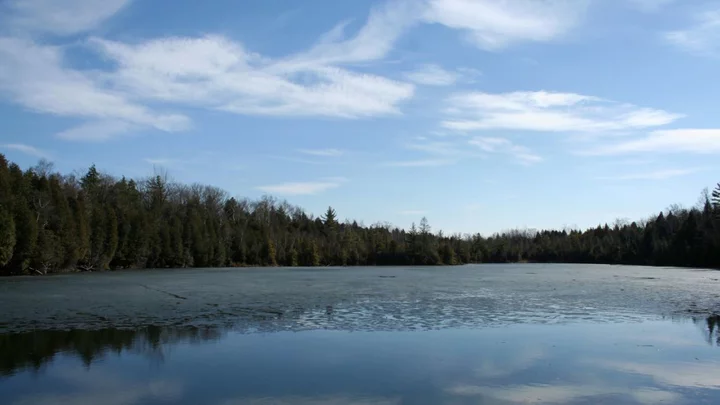
How one lake has captured the moment we changed the world forever
The floor of Crawford Lake in Ontario acts like a storybook, preserving Earth’s recent history in chronological order. Crawford Lake reveals the activities of local Iroquoian communities from the late 13th to 15th centuries, all the way through to the present day. This is because Crawford Lake is a meromictic lake, meaning that the dense bottom layer of water does not mix with the less dense upper layers. “The isolated bottom layer of water remains under disturbed, enabling the accumulation of clearly laminated valves which record precise information about the time during which they were deposited,” according to the Anthropocene Working Group. Experts have nominated Crawford Lake as representation for the start of the Anthropocene epoch, a proposed new geological era characterised by significant changes to the planet’s surface as a result of human behaviour. The Anthropocene is yet to be officially accepted as a unit of geologic time, but in 2016 a working group under the guidance of an International Commission on Stratigraphy subcommittee agreed that human behaviour has left scars so deep that they will remain evident even into the distant future. Sign up to our free Indy100 weekly newsletter One of the most notable markers of the Anthropocene is the appearance of plutonium, a radioactive material that appeared in the mid-20th century as a result of hydrogen bomb tests. “The presence of plutonium gives us a stark indicator of when humanity became such a dominant force that it could leave a unique global ‘fingerprint’ on our planet,” explained Professor Andrew Cundy, Chair in Environmental Radiochemistry at the University of Southampton and member of the Anthropocene Working Group. “In nature, plutonium is only present in trace amounts. But in the early-1950s, when the first hydrogen bomb tests took place, we see an unprecedented increase and then spike in the levels of plutonium in core samples from around the world. We then see a decline in plutonium from the mid-1960s onwards when the Nuclear Test-Ban Treaty came into effect.” Agreeing on a simple measure that defines the boundary between chapters in Earth’s history is just the first step. This measure requires agreement among scientists on a single location to define the boundaries. Known as the Global Boundary Stratotype Section and Point, or a golden spike, plays a crucial role in standardising these borders between epochs. The Anthropocene Working Group has been evaluating potential golden spike sites, from Oued Akrech, Morocco, to Alano di Piave, Italy. After spending three years assessing the qualities of a dozen potential golden spikes for the Anthropocene, finally the AGW has landed on Crawford Lake. “Crawford Lake is so special because it allows us to see at annual resolution the changes in Earth history throughout two separate periods of human impact on this small lake,” micropalaeontologist Francine McCarthy of Brock University in Canada, a voting member of the AGW, said at a press briefing. The lake’s unique properties, such as its small size, depth, and lack of water mixing create sediments that precisely record environmental changes over the past millennia. To officially establish the Anthropocene in the International Chronostratigraphic Chart, the golden spike at Crawford Lake must undergo a series of voting by various commissions and unions. If successful, it will mark the moment when human activities permanently altered the planet. Have your say in our news democracy. Click the upvote icon at the top of the page to help raise this article through the indy100 rankings.
2023-07-16 17:18
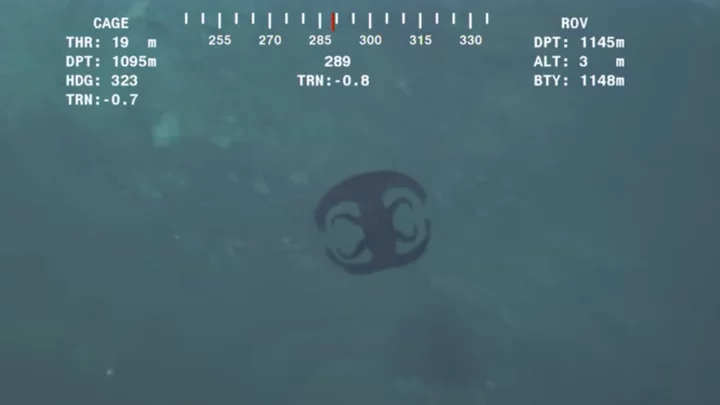
'Alien' suddenly transforms into a totally different creature in jaw-dropping underwater footage
If ever anyone needs proof that aliens exist, they need only turn to the bottom of the sea. No, we’re not talking about fragments of interstellar meteors or spacecraft, we’re not even talking about mysterious mermaids, we’re talking about the extraordinary creatures that lurk in the depths of our oceans. One of these incredible beasts has been captured on film, swimming more than 3,700ft (1,128m) below the surface of the Indian Ocean. What makes this “alien” so special is not just the fact it’s able to live so far beneath the waves, but the fact it can transform its appearance entirely in just the blink of an eye. Sign up for our free Indy100 weekly newsletter The jaw-dropping metamorphosis was recorded thanks to a remotely operated vehicle (ROV), which was exploring the sea off the East coast of Africa. In the clip, the creature – which looks more like a strange logo than a living being – can be seen floating serenely in the water. Then suddenly, 40 seconds into the video, it seems to shrink into a small black dot. On closer inspection, it’s clear that this isn’t a black dot but a jet-black jelly, decked out with streams of pulsating, technicoloured lights. The video was posted to YouTube by the user CaptainJRD back in 2013. In a caption, he explained that it was taken “at a depth of 3753 ft in the Indian Ocean within close proximity to a drill wellhead. “Near the end of the footage you can see the creature getting caught up in the output from the ROV thrusters. The video has not been altered,” he added. Alien looking creature transforming near Ocean floor at over 3700 feet.Video from ROV www.youtube.com The recording has been watched more than 5.8 million times, with viewers agreeing that it was the most “alien-looking creature” they’d ever seen. “If this isn’t one of the coolest things ever, I’m not sure what is,” one wrote. “Is no one gonna talk about how it looked like a disco ball after it transformed? This is an amazing discovery,” commented another. “This is why I never go more than 1000 ft underwater when I go to the beach,” joked a third. And a fourth added: “I’m a strong believer that everything deep deep down in the ocean looks like an alien. I also bet that there’s a lot of crazy species we’ve never seen before, hell I wouldn’t be that surprised if a 900 million-year-old dinosaur dwells at the bottom of the ocean.” Meanwhile, other commentators were quick to identify the creature, with most agreeing that it was a unique form of comb jelly. “For those wondering, this is a Bloodbelly Comb Jelly also called Lampocteis. Really beautiful creatures,” one wrote. Viewers also shared their dismay at what became of the stunning beast. Watch till the end of the video and you’ll see that no sooner does it execute its glorious transformation than it is brutally torn apart, apparently by a valve on the wellhead. “I became absolutely mesmerized. It was one of the most beautiful creatures I've ever seen, and then it suddenly just got ripped apart,” one commented. Hailing it as a “powerful video” another lamented: “The camera catches the most amazing, beautiful creature never seen before, just to see it torn to shreds by the oil blowout valve. “So very sad and also fitting for what we do to nature every second, everywhere on Earth.” Have your say in our news democracy. Click the upvote icon at the top of the page to help raise this article through the indy100 rankings.
2023-07-16 17:16
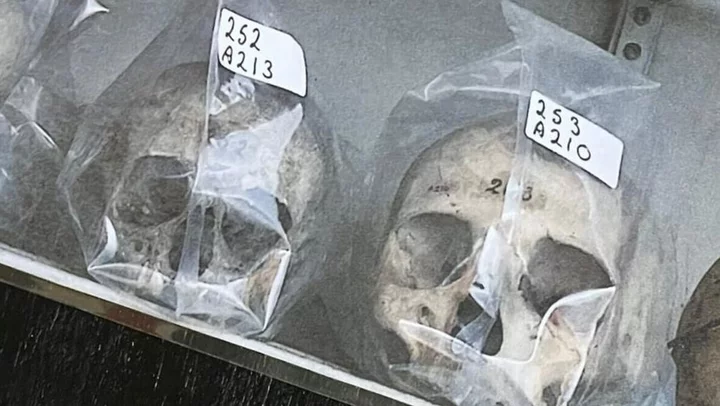
Relief as Irish island's stolen bones return for good
People from Inishbofin say they're relieved as remains taken 133 years ago come back to the island.
2023-07-16 13:51
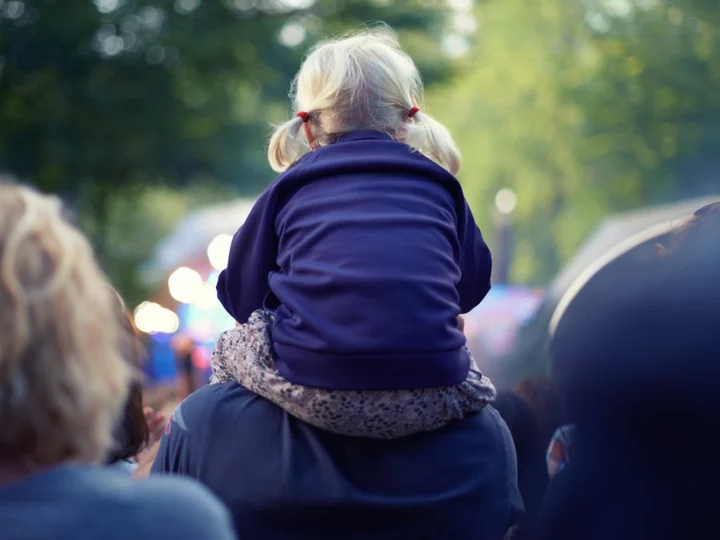
Nappy changes and tantrums over Michael Gove: I took my one-year-old to a music festival
It’s just after 9pm and lilac hues have spread across Dorset skies, shadows extending over a panorama of marquee tops. Perfect conditions for the first night of End of the Road, whose Friday headliners – Black Midi, Battles and Fleet Foxes among them – are minutes away from stepping on stage. Yet, rather than slipping through the masses to grab a good spot, I’ve been back at my tent for an hour already. Having unfolded a stool in the last of the sun, simmering lentils and a mug full of boxed cab-sav for company, my one-year-old daughter, Nancy, has finally nodded off in the tent, unaware of earlier negotiations between her parents. After an afternoon watching bands from a lower-decibel distance as a family, it’s my wife who’s out tonight, enjoying her child-free break for freedom. Although, with the Pixies – a band beloved since teen years but never seen live – top billing on Saturday night, I felt confident in my call as “White Winter Hymnal” carried on the breeze. We’re a day into our first festival as a family of three, an experience already proving quite a journey. As a sometimes music journalist, I’d covered events across Europe over the past decade, adept at negotiating stage splits, balancing reporting duties and life-affirming experiences with willing accomplices. Of these, End of the Road has remained a regular fixture, an informal end-of-summer meet-up with industry colleagues and friends – as well as my chosen stag-do destination. With a one-year-old in tow, this year would mark a stark contrast. From the freshly purchased family-sized tent – the subject of substantial research and investment, and an attempt to win over a camping-averse wife – to the travel cot, buggy, strings of fairy lighting, endless layers, toys and first-aid trappings for every eventuality, the baggage was endless. Shoulders ablaze, I’d carried it all in as my wife kept our daughter entertained. Stepping into my role as responsible dad, I’d practised the tent’s set-up at home prior to arrival and, with a tangible sense of optimism about the weekend ahead, started separating pegs from poles. Yet, with the tent almost up, something unsettled me. What was that smell? Unzipping the bedroom it hit me. My earlier garden practice run had provided the perfect sheltered toilet for a visiting fox –  evidence of which no amount of wet-wipe scrubbing could remove, resulting in a showdown with the reluctant camper and a smell that would accent a weekend in which expectations were continuously lowered. After my wife crashed back in on Friday night, earlier than anticipated and hamstrung by a fast-developing cold, we wondered if we were up to the challenge. Nancy was having a nice time, happy tracking insects in the long grass or studiously inspecting the contents of her snack bag. But could this equally have been any other field? Had we been too exhausted and distracted to embrace the experience? By contrast, our camping companions had brought their five-year-old, who enthusiastically shared stories about favourite bands and the wicker dragonfly he’d crafted, as his dad talked about the surprise sets he’d happened upon the previous night. Perhaps we’d just taken all of this on too soon. The next morning, I nudged Nancy’s buggy around the site, stopping at the kids’ area, where a neckerchiefed uke player offered up nursery rhymes with instruments for children, which were seized upon with pleasure. Various childless friends were never far away, entertaining our daughter in bursts. Later, after reuniting with my wife, a highlight was bobbing to Los Bitchos’ buoyant afternoon performance with Nancy held aloft, as was a brief glimpse of Jockstrap packing out a small stage in the woods. Yet other moments – flailing nappy changes amid aghast onlookers, straying too close to the stage with a buggy as the light faded and the crowd surged – presented a sharp learning curve. Still feeling under the weather, my wife headed back to the tent with Nancy as the Pixies arrived, Frank Black’s substantial presence now underscored by a pang of guilt. After checking in and being signed off to stay out, I’d joined an excitable crowd for an unannounced late-night set at the Tipi stage, which, after turning out to be one of the tiny handful of bands I’d already seen that day – again sounded another minor chord on my tiny violin. As the skies cleared, we’d discovered corners along the way we’d otherwise never have seen and met a similarly dazed yet determined community of parents With my wife’s health deteriorating further overnight – diminishing her perception of fox piss, at least – we made the call to leave on Sunday morning and I hauled everything back to the car. On the long drive home, and hours before Covid would be confirmed, it had to be asked: had this been fun for anyone concerned? Was this festival too aptly named for a new dad trying to reconcile past and present lives? This all happened in the summer of 2022 and, unfazed, we tried again this year – albeit at the even smaller scale and decidedly family-friendly Kite Festival in Oxfordshire. While Nancy’s advanced age presented new challenges – tentative first steps now a confident swagger – her inquisitiveness also marked her out as the perfect festival companion. Expectations now firmly in check, we let ourselves be led by circumstance and proximity, stopping for whatever drew the eye rather than dashing from act to act, allowing us to slow down and see the world through her eyes. Occasionally we tag-teamed the lineup, each picking a couple of acts to witness unhindered by short attention spans (my wife took former PM John Major’s packed-out talk in the big top, I took Suede). Under the hot sun, our meeting point at the shaded children’s area also helped keep Nancy from turning pink in the sun. Clapping furiously at the end of shadow chancellor Rachel Reeves’s morning debate, her grasp on Labour’s manifesto pledges seems better than most – although this mimicry of crowd behaviour proves an endearing feature at later events, too. An uncontrollable tantrum during Michael Gove’s appearance at a panel discussion saw us quickly extract ourselves from the tent, drawing smiles from an audience impressed by the effectiveness of her heckle. Further priceless memories included dancing together at Candi Staton’s sundown set, Nancy with a brioche in each hand – ear defenders askew – visibly finding her feet. The following day the skies suddenly broke, with an electrical storm closing all stages, sending Birkenstock-clad families sprinting for cover. The one attendee thrilled by it all was Nancy, who careered around cackling as security attempted to keep punters from the marquee’s lightning-conducting metal poles. As the skies cleared, we’d discovered corners along the way we’d otherwise never have seen and met a similarly dazed yet determined community of parents. We still hadn’t nailed the performative kids-at-festivals thing – there was no trolley adorned with decoration or whimsical outfits – but felt comfortable that we’d struck the right balance, fulfilled by a shared experience led by the spontaneity of a child’s impulses. It marked a shift from any naive attempt to carry on with our lives as normal. An alternative, of course, is to leave your family at home. A couple of weeks ago I joined 250,000 others at Glastonbury, my own spontaneity given breathing space once more. Thrilling, yes, but also a weekend that at times left me seeking my small festival companion among the other attendees. I was temporarily overcome watching a daughter on the shoulders of her father as he introduced her to a favourite band, excitedly explaining each musician’s role. “How old? I’ve got one a similar age,” was shared with various others. Yet it was also at Glastonbury, as the temperature nudged into the thirties, that I spotted another dad – fixed grin but dead behind the eyes – pushing three irritable kids in a trolley up a shadeless slope. I nod my solidarity, before skipping off to the bar – relieved, this time, that’s not me. Bumping into Joe Goddard from Hot Chip, whose bandmates collectively call their kids the Micro Chips, he says that of all the children he knows, it’s those who have always been dragged to festivals who have proved the most rounded. Something that resonates with me as the Glastonbury hangover subsides and – reunited with my family – I start looking forward to carving out new shared experiences in crowded fields once more. Read More The earthy magic and lawless energy of being a child at Glastonbury festival Too cool to love these acts 10 years ago? This year’s Glastonbury is for you Music festivals have saved me so many times Demi Lovato says she still struggles with vision, hearing impairment after overdose Marina Diamandis says she has been diagnosed with chronic fatigue syndrome Should I keep my windows closed or open during a heatwave?
2023-07-16 13:46
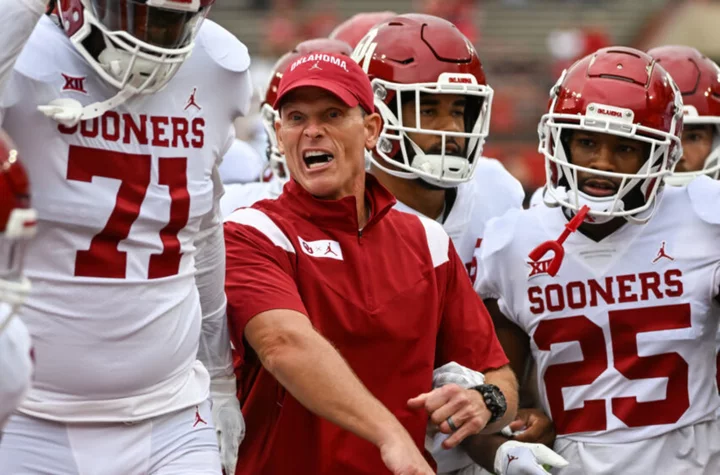
Brent Venables takes devastating shot at Deion Sanders
Brent Venables is building his Oklahoma football team way differently than how Deion Sanders is rebuilding his Colorado football program.It is a shame that Brent Venables' Oklahoma Sooners and Deion Sanders' Colorado Buffaloes aren't conference rivals.Venables is entering year...
2023-07-16 04:19
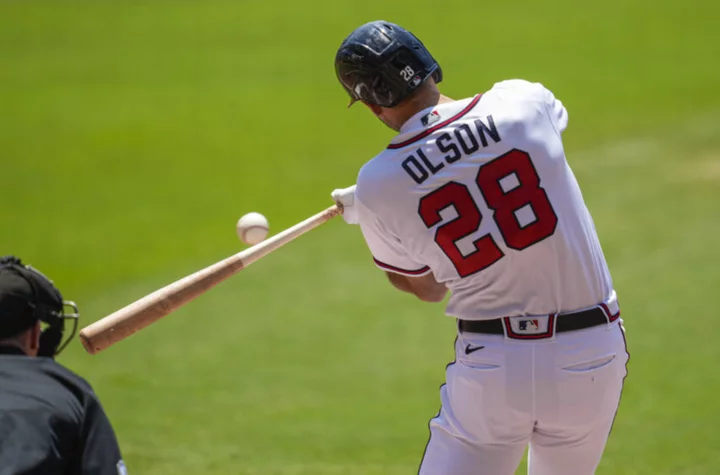
Braves: Matt Olson trade has gotten even worse for A's in the last 24 hours
Did the Braves win the Matt Olson trade? Absolutely, and it's not even close.Matt Olson hit a grand slam on Friday night. For any other player, that would be a monumental achievement. It's certainly nice, but it's also what we've come to expect from Olson this season.http...
2023-07-16 03:16

NBA Rumors: Surprise team wants in on Damian Lillard trade talks
The Heat and Blazers need some help getting a Damian Lillard trade done. Thankfully, the Raptors want to be that third team, per the latest NBA Rumors.The Toronto Raptors want in on Damian Lillard trade talks.By no means do they want to acquire Lillard in a Kawhi Leonard reboot. Rather, Toro...
2023-07-16 02:50
